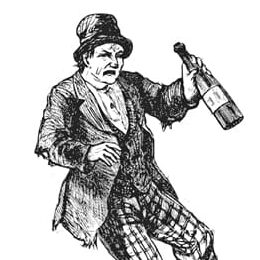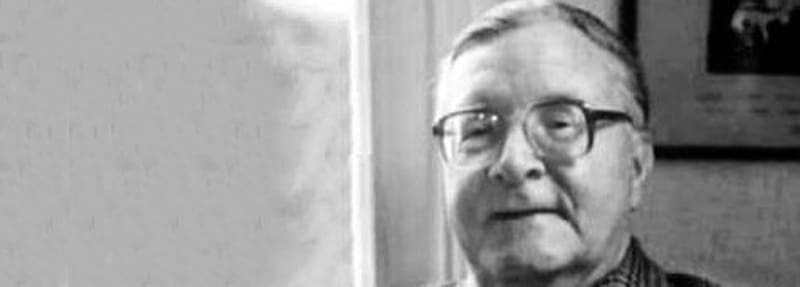Contributed by the late Paul Robinson
When I was little, before and during the Kaiser’s War, Wharncliffe Road was still new and only partly developed. My grandfather, George Maltby, was in ‘The Red House’, which, in 1899, was the first to be built. My parents’ house (Wandsley House), which he had built for their marriage, was, I think, the second. As well as gas lighting, which was then usual, it was wired in readiness for electricity, which was shortly to become available from the new power station at Pewitt, beyond Manners Colliery. This was in 1902.
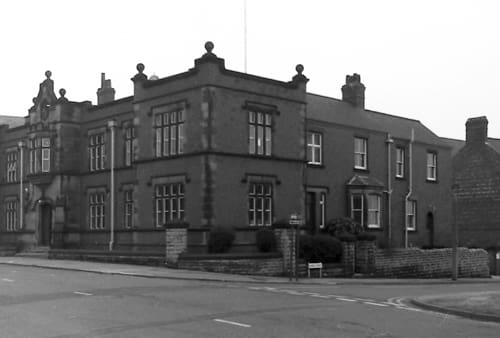
By the time I arrived, the Congregational Church had been built, with its copper weather cock (now so sadly missed), but not yet The Manse. The only houses below ‘The Red House’ were ‘Holyrood’ (Mrs Manners from Cotmanhay) and next ‘Homecroft’ (Benjamin George Johnson of Greenhough and Johnson, the ironmongers in the Market Place). The gaps between the new houses were all filled by lock-up gardens, all tenanted and carefully tended in those days, often with a little brick cabin with fireplace and chimney for the gardener’s comfort. On that side of the road, these gardens extended all the way down to what is now Oakwell Drive. Behind ‘The Red House’ there was Sanders’ orchard which served his thatched shop at the bottom of South Street. Beside the orchard gate in Albert Street was a little disused engine house with miniature tall chimney which was a relic of the town water supply system before the formation of the Ilkeston and Heanor Water Board.
Except for the Rutland Foundry which used to belch out flames and smoke in gratifying quantities to small boys, there was nothing else except gardens between our road and Derby Road, except one single large old house which still stands there. Oakwell Colliery was still in operation across Derby Road, and could be seen (and heard) from our bedrooms. Sound travelled much further in those days before our ears had adapted themselves to the perpetual background noises of the present day. As a child I was both fascinated and alarmed by the noise of the Great Northern Railway hauling heavily laden ironstone trucks up the slope of the Stanton branch to the Derby Road summit. There was much chuffing and occasional wheel slipping and clanking of buffers and couplings so loud that at night a child could imagine it very close to the house. Small wonder that in those days every boy played at trains, not, as now, at motoring and flying.
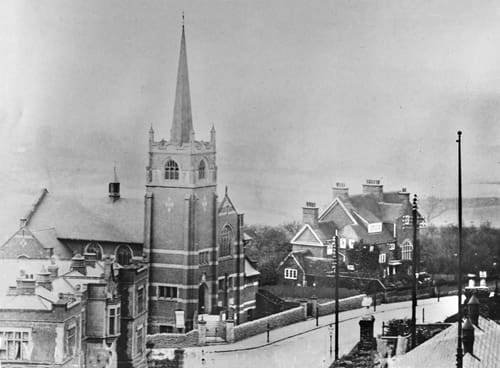
Returning to the subject of gardens, there was a twitchel opposite us running between the gardens downhill nearly to the Rec’. On our side of the road nearly all the existing houses had been built – numbers 53 and 54, the pair at the top, were occupied by James Rowell, the Bath Street draper, and G W Wooliscroft, the Midland Railway engineer, and later F P Walker, the first headmaster of the County Secondary School. Next was ‘Overton’, built by John Ormond, the solicitor, but then occupied by his widow, and later by Dr J W Barber. Below us was ‘The White House’ built by Miss Edith Brenda Lewis of the J B Lewis (Meridian) hosiery firm. She deserves a digression as she was a pioneer of works welfare and had part of her house designed for that purpose. Later, with Miss Effie Grace Wilson, her companion, she founded and set up Michael House School. G W Wooliscroft took over ‘The White House’ from her when she left.
All the houses were built on 99 year leasehold plots from the Duke of Rutland, who owned a large part of the town of Ilkeston until the early twenties when the estate was sold by auction in lots to raise death duties. Until then, our garden consisted of our plot plus an ‘L’ shaped rented garden at the rear extending to Pimlico. Between us and Ormond’s was a garden rented by them and a little triangle of waste land cut off a garden by the making of the road. Between Ormond’s was a garden rented by them and a little triangle of waste land cut off a garden by the making of the road. Between Ormond’s and our rented garden in Pimlico was a lock-up garden occupied by ex-Superintendent Daybell who had a beard like King Edward VII and (unless I am imagining it) a wire-haired fox terrier called (like the King’s) Caesar! His garden entrance was through a gate in a wall which still exists in the twitchel joining Albert Street and New Lawn Road. Part of his boundary fence with us was made up of an old lock-up door from his old Police Station at Langley Mill. It had a little, round, barred peep-hole in it.
All this changed after the Duke of Rutland’s sale. My father, in agreement with the neighbours, bought all the rented garden land between Wharncliffe Road and Pimlico so that each house plot was extended right through to the back as at present. The Corporation bought all the gardens on the other side of Wharncliffe Road and laid out Oakwell Drive and Crescent and St Andrew’s Drive, selling off the frontage as private building plots. Pimlico Lane (which had merely been a cart track down which the dust cars squeaked their way and deposited their loads to extend the Rec’) was also laid out as it now is, but lamentably renamed West End Drive, except for its upper part. That part had a number of cottages at the top called Dorothy Cottages and Vernon Cottages, and nearby was Lawn Terrace. Below the Sir John Warren, where the Town Hall car park now is, stood a house occupied by Mrs Hartshorn who also kept a shop on the opposite side.
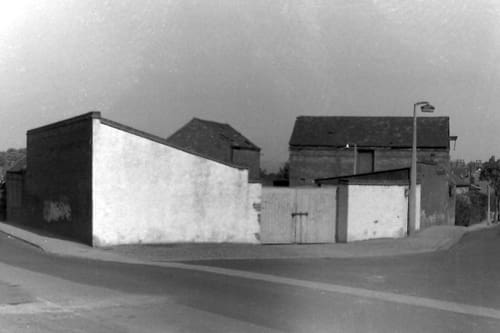
Croft Yard, where the reservoir now stands, was the main Corporation dept, where the steamroller (by Greens of Leeds) rested at night with a saucepan lid on its funnel to keep the fire damped down ready for morning. Across that bit of New Lawn Road (then only a twitchel) were the transport cars and stabling for the horses. There was one cottage flanking Pimlico, and below these buildings was a hedged footpath leading to St Mary Street. The rest was all gardens, except for Hickman’s Garage which I just remember being built.
Pre 1914, there was virtually no motor traffic and consequently most road were not tarmac but either granite setts or macadam. The trams ran from Hallam Fields to Cotmanhay and, except for these, there was no public transport. To go to Nottingham or Derby (or to the intermediate stations) you walked to the Midland Railway [Ilkeston Town] or Great Northern Railway [later Ilkeston North] stations and took the train.
There were horse drawn cabs (H Davis in St Mary Street and some others at the Rutland Hotel). Private cars were very rare and men, women and even children were accustomed to walking long distances.

